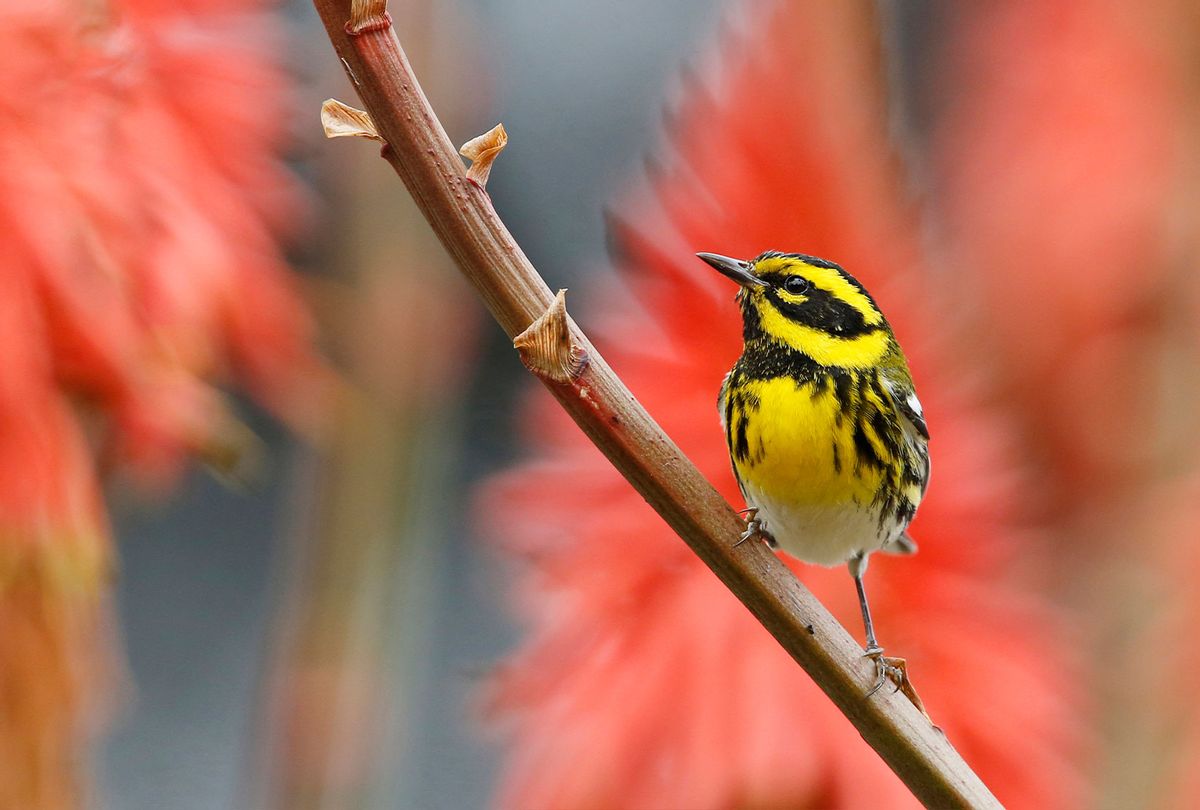What's in a species name?
In some cases, the answers include paternalism, colonialism, sexism and racism.
Take the Townsend's warbler (Setophaga townsendi), for example. This small, bright yellow North American bird was first scientifically described at Fort Vancouver in Washington state, just a few miles from where I live. We get a ton of them in our backyard every year.
But the Townsend's warbler, beautiful though it may be, is a bird whose name has a dark history. It was named by American naturalist John Kirk Townsend, who described dozens of species in the early 19th century — right around the same time he was stealing human remains from Native American grave sites and shipping the skulls back East to help support a friend's racist theory that Indigenous peoples were actually separate species.
As you might expect, in these more enlightened times, several experts have proposed renaming the Townsend's warbler, along with dozens of other North American birds that bear the names of other ethically dubious researchers or historical figures.
And North American birds are not alone.
Around the world, taxonomists and conservationists say we need to address similar species-naming issues, although most aren't as glaring as the Townsend case.
An example comes from biodiversity-rich New Caledonia, an archipelago in the southwest Pacific Ocean about 750 miles east of Australia.
Like many islands, New Caledonia's remoteness allowed unique species to develop and thrive. Hundreds of unique plants and animals call the islands home, including the world's largest gecko, the 14-inch Leach's giant gecko (Rhacodactylus leachianus), known by many as "the Leachie" and named after English zoologist William Elford Leach, who never set foot on the islands.
"The Leachie" is just one example. A new paper published in the journal Biological Conservation, "The inequity of species names: The flora of New Caledonia as a case study," examines the names of more than 650 plants native to New Caledonia that have been named after particular people — usually botanists or collectors. It found that just 7% of the species were named after people born on the islands. Further, only 6% of these plants were named after women (and some of those women were the wives or daughters of the botanists).
This isn't just a function of decisions made centuries ago, either. Most of the species were named by researchers in the past 50 years.
"We should be more inclusive in our taxonomic practice and think about the consequences for the conservation of the species that are newly named," says Yohan Pillon, the author of the study and a biologist with Institut de Recherche pour le Développement in Montpellier, France.
Of course, naming a plant species in New Caledonia is, at best, challenging due to their stunning variety.
"The flora of New Caledonia is extremely diverse and complex," Pillon says. "There are over 100 species in the genus Phyllanthus, over 90 species in the genus Psychotria. Few people on Earth can tell them apart."
Even beyond that challenge, purposefully identifying taxonomic names based on more culturally relevant identifiers poses a few problems. New Caledonia, now a territory of France, was originally inhabited by the Kanak community, who currently represent about 41% of the total population. They've been joined over the centuries by people from Polynesia, Europe and southeast Asia. French is the dominant language, and while the dozens of Indigenous Kanak languages are still spoken and taught, they're not as strong as they once were.
"There are 30 Indigenous languages, some spoken by very few people or poorly studied," Pillon says, "which makes ethnobiological surveys complex compared to places like Hawai'i. You need both acute botanical and linguistic knowledge for that. Vernacular names are therefore a very difficult information to collect in New Caledonia and often not very reliable. In New Caledonia, few endemic plants have a known common name."
But despite any challenges that might come in determining a species' taxonomic moniker, picking the right name can have conservation benefits. Pillon points out a case from earlier this year in which local people expressed support for naming a new plant species after its sole remaining habitat.
A similar situation occurred last month in Guiana, where an orchid newly described by scientists had its name chosen by the Pemón Arekuna Indigenous community. Polish researcher Mateusz Wrazidlo told Mongabay that this was an example of "decolonizing science nomenclature and giving more representation to Indigenous [and] local languages."
Pillon echoes that sentiment. "Conservation science needs to be more inclusive," he wrote in his paper, "and the naming of new species offers an excellent opportunity to acknowledge more broadly the diversity of individuals who have contributed to our understanding of the natural world. Areas of high biodiversity often overlap with areas of high linguistic diversity, but the links among biodiversity and cultural and linguistic diversity are often underappreciated. To promote the preservation of biodiversity, species should be named with an eye toward how these names will be perceived by the local communities involved."
And it's not just plants and animals that should be named more thoughtfully or renamed to reverse an inequity. Place names also matter. Last year in the United States, Rep. Deb Haaland — currently on track to be the Biden administration's secretary of the Interior — introduced a bill to reexamine geographic places or features currently known by offensive or racist names, which often belittle Native peoples or erase longstanding Indigenous place names.
That's no small challenge — there are more than 1,400 of these questionably named locations in the United States alone — but names have power. Renaming something or thoughtfully identifying it in the first place offers one more tool for helping to protect the world's threatened species and habitats — while they still exist for us to name.




Shares